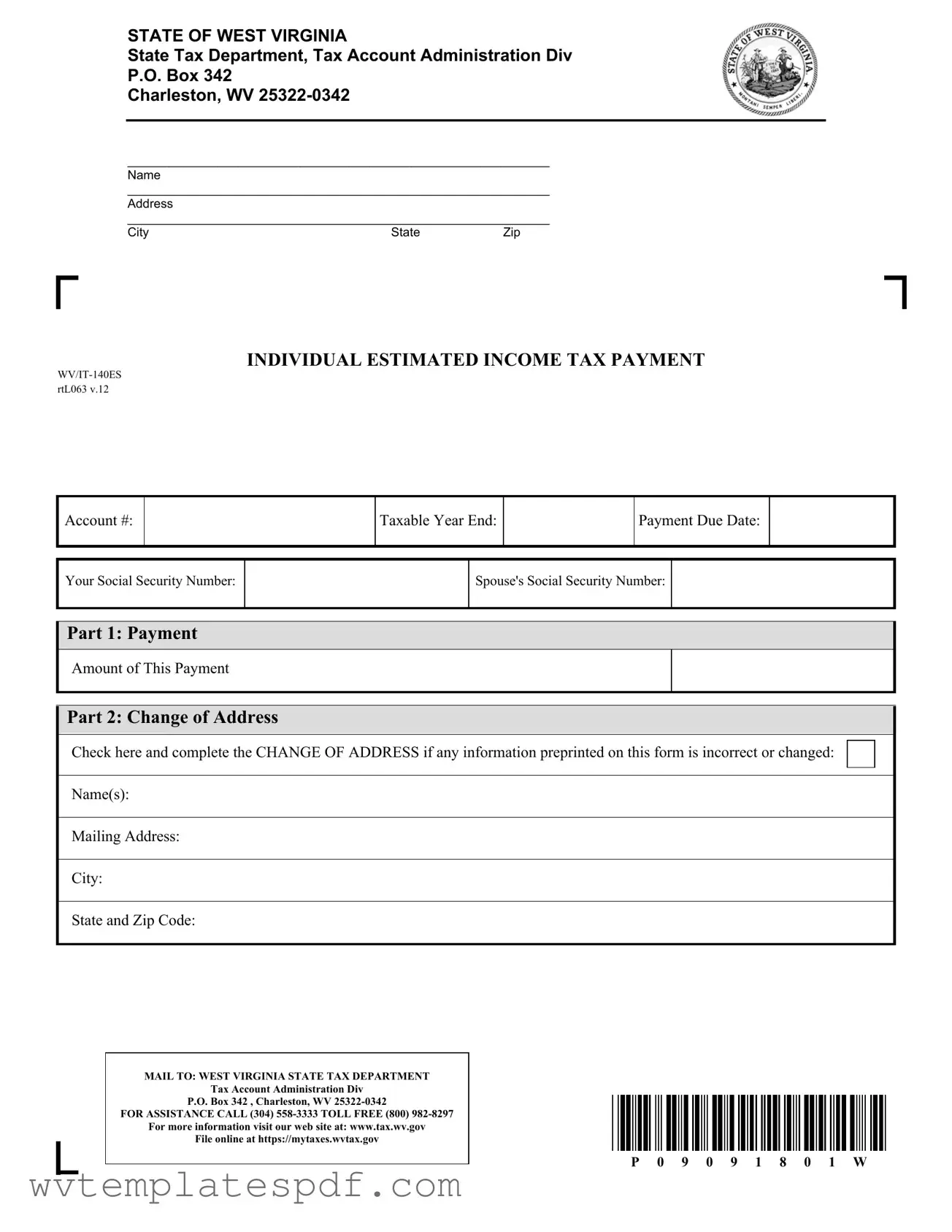Filling out the West Virginia Estimated Tax form can be straightforward, but many individuals make common mistakes that can lead to complications. One frequent error is failing to accurately calculate the estimated tax amount. Individuals must determine their expected tax liability for the year. If this calculation is incorrect, it could result in underpayment penalties. It's crucial to refer to the instruction brochure (Form IT-140ESI) for guidance on how to compute this figure correctly.
Another common mistake is neglecting to check for preprinted information accuracy. The form may contain prefilled details such as the taxpayer's name, address, or Social Security number. If any of this information is incorrect, it should be updated in the section provided. Failing to do so can cause delays in processing and potential issues with tax records.
Some individuals overlook the payment table section of the form. It is important to post the payment amount in the designated area. This step ensures that the payment is properly recorded and credited to the taxpayer's account. Without this, there may be confusion regarding the payment status, leading to unnecessary follow-up communications with the tax department.
Additionally, many taxpayers forget to consider their filing status when completing the form. The instructions specify different guidelines for individuals who are not calendar year taxpayers. Those who fall into this category must pay attention to the specific due dates for their estimated payments. Missing these deadlines can result in penalties and interest charges.
Another mistake involves not mailing the form to the correct address. The completed form and payment should be sent to the West Virginia State Tax Department, specifically to the Tax Account Administration Division. Using the wrong address can lead to delays in processing and may affect the taxpayer's compliance status.
Lastly, some individuals fail to seek assistance when needed. The West Virginia State Tax Department provides a contact number for inquiries. If there are uncertainties about filling out the form or calculating the estimated tax, reaching out for help can prevent errors and ensure compliance with state tax laws. Taking the time to verify information and seek guidance can save taxpayers from potential issues down the line.
